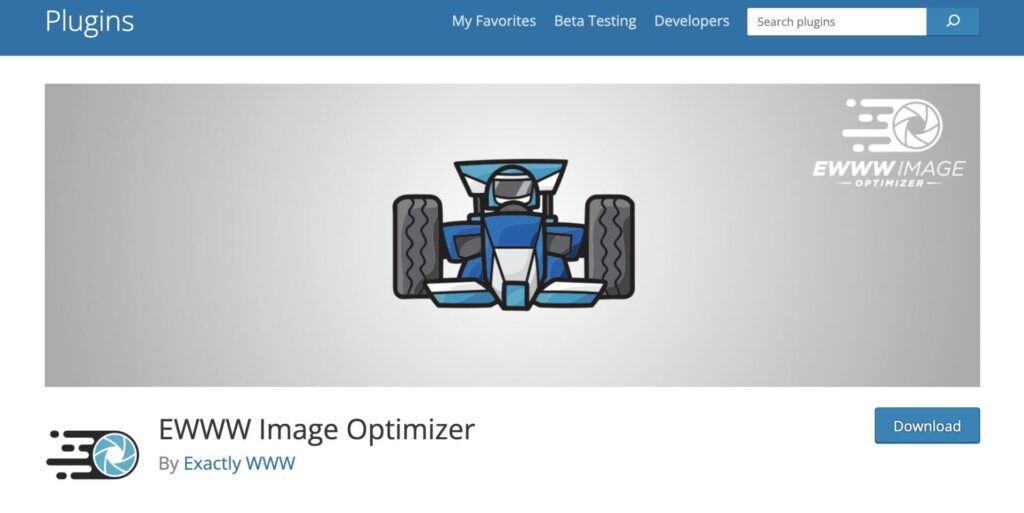Keeping your website visible on the web can be a complicated process if you don’t know the basics of search engine optimization (SEO).
There are many factors which contribute to better rankings and one of them is image optimization for SEO.
There’s no technical knowledge or expertise needed to optimise your images for SEO. Instead, image optimization for SEO is one of the easiest and most effective ways to improve your search rankings.
In this post you are going to learn what should be your idea of image Optimization for SEO to rank your posts higher in Google search.
Let’s dive in.
1. Compress Your Images for a Smaller File Size
One of the most important elements to image optimisation for SEO is compressing your image files. Using tools such as Photoshop’s “Save for web” option or WebP, you can reduce the file size of your images without sacrificing quality.
There is one even easier way to do this, and that’s by installing an image optimising plugin directly into your site’s wordpress dashboard. These plugins can compress your image directly when you upload them on your website, hence saving you time and space. The plugin that we use on our website is Ewww image optimiser and it works really good.

Compressed images will load quickly, improve website performance, and provide a better user experience overall.
While there is no fixed best image size for SEO but ideally the image size should be less than 100kb whenever possible.
2. Add Appropriate Alt Text to Each Image
Your second step to optimize images for web should be adding an Alt text to every image you post on your website.
Alt text (also known as “alt attributes”) is an HTML attribute that provides a brief description of an image. It allows search engines to recognise the content and context of an image and it’s also what screen readers use to convey information about the image to visually impaired users.

Adding appropriate alt text to each image on your website is essential for SEO – make sure you include short, meaningful descriptions that accurately describe what the image is showing.
3. Include Relevant Captions For Every Image
SEO optimized images have captions that are relevant to them.
Captions serve two purposes – to provide additional information about the image and to give you another opportunity to include keywords that fit naturally within the content.

When adding captions, avoid using too many keywords as this can lead to keyword stuffing, which could hurt your rankings. Instead, focus on providing a context for the image and adding any pertinent details that users would benefit from knowing.
4. Use Descriptive File Names for Easier Categorisation
File names are another important element of image optimization.
When you’re uploading images to your website, make sure that you use file names that accurately describe the image and include relevant keywords. This will make it easier for search engines to categorise your images and rank them higher in the search results pages.
Additionally, descriptive file names also help to give users a better idea of the content, leading to more clicks and visits to your website. Apparently, sometimes you can increase your website traffic by upto 45% with only a single blog post, and that can happen with an article that ensures search engine optimized images.
5. Format Images Properly For Load Speed and Cross Platform Compatibility
In order to make sure your image optimization is successful, you need to take into account the format of the images you’re uploading.
Different file formats have varying levels of compression, meaning that some will be faster to load than others. The two main formats you should use are JPEG and PNG, depending on the type of image being uploaded.
JPEGs are ideal for photos since they are smaller file sizes but still maintain good quality. PNGs should be used when your image has a lot of text or detail, as they optimize better than JPEGs.
Additionally, picking the right format also ensures that your images look good on all devices and screens, hence playing a positive role in image optimization.
6. Use lazy loading to speed up the loading of your page
Lazy loading is a technique that delays the loading of non critical resources, such as images, until the user scrolls down to that part of the page.
This can significantly improve page load times and reduce data usage for users with slow internet connections. Lazy loading is particularly useful for websites with a lot of images or long pages.
You can turn on Lazy loading in your wordpress website if your theme provides the option or you can use a simple Lazy load plugin to do it for you.
7. Use responsive images
Responsive images are images that adjust their size and resolution based on the device and screen size being used to view them. This can help improve page load times and provide a better user experience on different devices.

To implement responsive images, you can use techniques such as using the srcset and sizes attributes or serving different images based on the device type or screen size.
8. Use Image Sitemaps
An image sitemap is a separate sitemap that provides search engines with additional information about the images on your website, such as their location, title, caption, and license. This can help search engines better understand the content and relevance of your images, and improve their visibility in image search results.
To create an image sitemap, you can use a sitemap generator tool or manually add image-specific tags to your existing XML sitemap.
Conclusion: Image Optimization for SEO
In conclusion, SEO optimized images are an important aspect of on-page optimization that can greatly enhance a website’s visibility and user experience.
However the 5G has revolutionised SEO and marketing but image optimization still plays an active role in deciding your website’s rank on Google.
By using descriptive file names, compressing images, using alt tags, choosing the right file format, implementing responsive images, creating image sitemaps, and using lazy loading, you can optimize images for web, increasing accessibility and relevance of your website’s images for search engines and users.
Following these image optimization best practices, it can ultimately lead to higher search rankings, increased traffic, and better engagement with your website’s audience.

